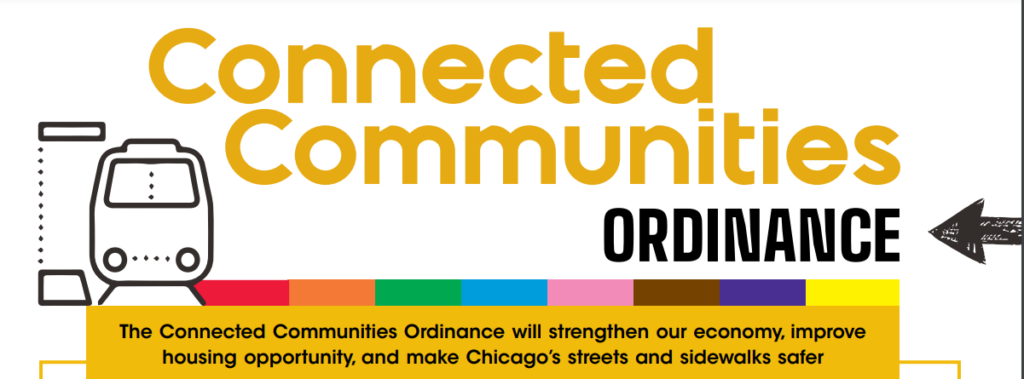The Connected Communities Ordinance is Law!
Let’s celebrate the W *and* keep up the momentum.

In these difficult times, it’s nice to get the W. There’s a lot more to do on ETOD, but it’s REALLY nice to get the W. On Tuesday, July 20, City Council voted 36:10 to adopt the Connected Communities Ordinance. In addition to Mayor Lightfoot, MPC is grateful for Alders Burnett, Hadden, Rodriguez, and La Spata for sponsoring.
It was a long-sought victory for MPC, Elevated Chicago, Active Transportation Alliance, Illinois Environmental Council, and the 80+ organizations who worked together with City staff in the Equitable Transit-Oriented Development working group to co-develop the legislation and see it through City Council. The ordinance benefits from engagement, analysis, and recommendations from the City’s first-ever combined Health & Racial Equity Impact Assessment. It also advances implementation of the Equitable Transit-Oriented Development Policy Plan adopted unanimously by the Chicago Plan Commission in June of 2021 after robust public engagement, reaching over 330 Chicagoans in 41 meetings for community feedback and 59 total public comment letters from organizations and individuals.
MPC staff reviewed early proposals and analyzed data to evaluate the impact the ordinance would have. We worked the proverbial phones (and Zooms), listening carefully to concerns and answering questions from Alders in advance of the vote. We engaged our Board of Governors, Committees, and stakeholders, many of whom reached out to their elected representatives. MPC VP of Programming, Kendra Freeman, testified before the Chicago Zoning Committee in support of approval. All of this helped to build and broaden a, now strong and active, coalition in support of ETOD in Chicago.
Now in effect, the ordinance delivers upon its name, safely connecting communities by train and bus to friends, family, jobs, grocery stores, parks, art, and all of the other people and places that make Chicago great. As MPC CEO, Darlene Hightower, and CFL President, Bob Reiter pointed out in their letter to the Chicago Tribune Editorial Board, the ordinance will also bring jobs to Chicago and save families money spent on transportation.
While we are excited about what this means for the future of Chicago, much work remains to be done. The original version of the ordinance, introduced in June, would have allowed for small multi-family housing to be developed in single-family zoning districts near transit. While not a perfect solution for low-income families, this would have created opportunities to fill in gaps in the City’s “missing middle” housing crisis. Over the last two decades, 4,800 2- and 3-flats were lost to deconversion and demolition. Unless we can expand the area where those can be built, it will be difficult to bring these back buildings that once housed multi-generational families and mom-and-pop landlords with affordable rental units.
Ultimately, the Connected Communities ordinance changes what can be built and where it can be built…and that‘s important. Chicago is going to need new investment to make good on the potential enabled by this important ordinance. Looking forward, MPC will 1) interrogate the role that land use policies have and continue to play in housing choice and community investment, 2) make sure that both upcoming federal and sustaining local investments are pointed to ETOD in disinvested communities of color, and 3) redouble our efforts to bring government transportation actors (CDOT, CTA, Metra, and Pace) to the table. The coalition forged in passing the Connected Communities Ordinance is committed to these next steps and our momentum is strong.
Image credit: The City of Chicago
